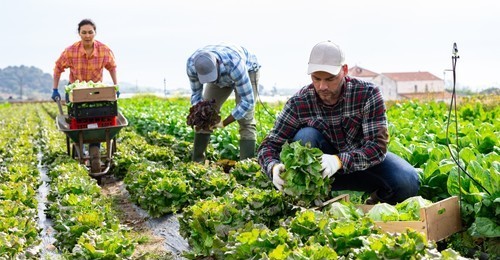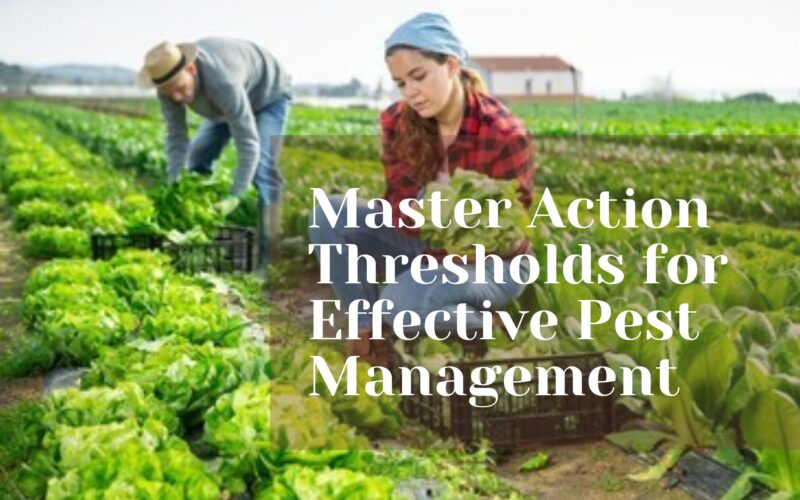Did you know a few pests or mites can be okay in many cases? The big question is: When should you act? This is where the action threshold comes in. It’s a key idea in managing pests.
The action threshold is the point where you should act against pests. It depends on the cost of action, the value of what you’re protecting, and the environmental impact. Learning to set and adjust these action thresholds helps you manage pests well without harming the environment.
This article will cover how to use action thresholds in pest management. We’ll show you how to set these important limits. By understanding action thresholds, you can make smart, data-based decisions. This helps you balance controlling pests with protecting the environment.
Understanding Action Thresholds In Pest Management
In pest management, knowing about Action Thresholds is key. These are the levels of pests or damage that mean it’s time to act. They help prevent economic losses and health risks by starting control early.
Action Thresholds are not just random numbers. They come from careful monitoring and analysis. They mark the point where managing pests is cheaper than dealing with their damage.
To set these thresholds, experts look at how vulnerable the crop or environment is, the economic impact, and the control methods available.

Establishing Economic Thresholds
Economic Thresholds are similar to Action Thresholds but focus on money. They’re the point where managing pests costs more than the damage they cause. To figure this out, experts watch pest numbers, assess risks, and look at market trends. This way, they only act when it makes economic sense.
Knowing about Action and Economic Thresholds helps experts decide when to take action. This approach uses resources wisely and reduces the harm pests can do to crops, properties, and the environment.
Principles Of Integrated Pest Management (IPM)
Integrated Pest Management (IPM) is a way to control pests that focuses on keeping the environment healthy. It uses proactive steps to stop pests before they become a problem. This approach reduces the need for harmful chemicals.
IPM has key principles that guide its use in farming and other areas. These principles help make sure IPM works well everywhere.
IPM In Agricultural Settings
In farming, IPM strategies include choosing crops that pests don’t like and planning where to plant them. It’s important to watch pests and decide how to act based on what you see. IPM also uses helpful insects to fight pests, cutting down on pesticide use.
IPM For Non-Agricultural Spaces
For places like parks and storage areas, IPM focuses on design and cleanliness. It uses barriers to keep pests out and keeps areas clean to remove food and shelter for pests. Watching for pests helps decide when to take action, using the least harmful methods possible.
IPM is based on keeping nature in balance, sustainable farming, and using crops that pests don’t like. It focuses on stopping problems before they start and using natural ways to control pests. This approach helps protect the environment while managing pests effectively.
Action Threshold And Its Role In Pest Monitoring
Effective pest monitoring is key to managing pests well. It’s about knowing what pests you have and checking on them often. This helps you decide if you need to act.
It’s not just about finding pests. It’s also about knowing what might draw them in. This knowledge helps you predict when pests might show up and plan how to deal with them.
Setting Action Thresholds is very important. These are the levels of pest populations where it makes sense to take action. By watching pest numbers and comparing them to these levels, you can decide when to start controlling them.
Good surveillance is the base of this method. Keeping track of pests, the environment, and helpful insects helps you see problems before they get worse. This way, you can act fast and use control methods wisely.
Using Action Thresholds in your pest plan means you act only when needed. This makes your efforts more efficient and cost-effective. It helps you avoid doing too much and keeps your environment healthy and productive.
Remember, Pest Monitoring and using Quantitative Thresholds are key to a good IPM plan. Together with different control methods, they help you manage pests in a way that’s good for the environment.
Implementing Pest Control Strategies
Effective pest management often requires a mix of strategies. Using different methods helps reduce the need for harmful chemicals. This approach is better for the environment. Let’s look at the main parts of a pest management plan.
Cultural Control
Cultural control is key to cutting down on pesticides. It changes the environment to stop pests from thriving. This includes environmental modification, sanitation, and using host-plant resistance.
By controlling water, shelter, and choosing pest-resistant plants, pests find it harder to survive. This breaks their life cycle and behavior.
Chemical Control Approaches
Chemical control should be used carefully but can be part of a pest plan. Targeted application of pesticides is better than spraying widely. It helps protect natural enemies of pests too. There are synthetic pesticides and biopesticides made from natural stuff like plants and minerals.
Biological Pest Management
Using natural enemies is a key part of green pest control. This method brings in or keeps predators, parasites, or pathogens that target pests. It cuts down on chemical use and helps ecosystems stay healthy.
By mixing cultural, chemical, and biological methods, you can make a strong pest management plan. This plan keeps pests under control without harming the environment or your ecosystem’s health.
Conclusion
Stopping pests before they start is key to effective pest control. By taking proactive steps, you can cut down on the need for later treatments. Integrated Pest Management (IPM) combines different methods for a green way to handle pests.
This method means watching closely and setting clear action thresholds. This way, pest control works better and harms the environment less.
To manage pests well, you need to know about the pests, set the right action levels, and use many control methods. This complete approach helps your pest control last long and keeps your land healthy and strong.
